| Season Start: | 04 January 1982 | | Season End: | 31 March 1982 | | Season Length: | 13 Weeks | | Writers: | Christopher Bailey, Christopher H. Bidmead, Eric Saward, Peter Grimwade and Terence Dudley | | Directors: | Fiona Cumming, John Black, Peter Grimwade, Peter Moffatt and Ron Jones | | Producer: | John Nathan-Turner | | Script Editors: | Antony Root and Eric Saward | | Visual Effects: | Mickey Edwards, Peter Logan, Peter Wragg, Simon McDonald, Steve Bowman and Tony Auger | | Title Sequence: | Sid Sutton | | Title Music: | Ron Grainer and the BBC Radiophonic Workshop. Arranged by Peter Howell |
|
Incarnation of the Doctor: |
The Fifth Doctor (Newly Regenerated)
|
| Number of
Companions: |
3 |
| The
Companions: |
Adric (Dies), Nyssa and Tegan Jovanka (Departs)
|
| Number of
Stories: |
7
|
| Number of
Incomplete/Missing Stories: |
0
|
| Number of
Episodes: |
26
|
| Number of
Incomplete/Missing Episodes: |
0
|
| Percentages: |
| Full Stories Held | 100% | | Episodes Held | 100% |
|
| Average Viewers
(Millions) |
9.2 | | The Best Story | Black Orchid (10.0)
|
| The Worst Story |
Kinda (8.8) | | Doctor Who Magazine Poll (1998) | | | Doctor Who Magazine Poll (2009) | | | Doctor Who Magazine Poll (2014) | |
|
 'For some people, small, beautiful events is what life is all about!' 'For some people, small, beautiful events is what life is all about!'
The Doctor
(Earthshock) |
|
|
|
|
| |
 |
| The Fifth Doctor |
|
 Season Nineteen was the Fifth Doctor’s first season. Playing the part of the Fourth Doctor, after seven years in the role, Tom Baker had become the most popular incarnation of The Doctor. Not only was Tom Baker’s departure a major event for the show but also for whoever took over the lead role as they would have a very daunting task taking over what had become such an iconic character in British television. Season Nineteen was the Fifth Doctor’s first season. Playing the part of the Fourth Doctor, after seven years in the role, Tom Baker had become the most popular incarnation of The Doctor. Not only was Tom Baker’s departure a major event for the show but also for whoever took over the lead role as they would have a very daunting task taking over what had become such an iconic character in British television.
 That task fell to Peter Davison a well-respected actor known for his role as Tristan Farnon in the popular BBC series All Creatures Great and Small and who, at the time of being cast as the Fifth Doctor, was starring in the comedy series Sink or Swim". Peter Davison joined the cast in late 1980 and first appeared in the Fourth Doctor’s final story "Logopolis" - joining series regular Matthew Waterhouse and new stars Sarah Sutton and Janet Fielding for the crucial regeneration scene. That task fell to Peter Davison a well-respected actor known for his role as Tristan Farnon in the popular BBC series All Creatures Great and Small and who, at the time of being cast as the Fifth Doctor, was starring in the comedy series Sink or Swim". Peter Davison joined the cast in late 1980 and first appeared in the Fourth Doctor’s final story "Logopolis" - joining series regular Matthew Waterhouse and new stars Sarah Sutton and Janet Fielding for the crucial regeneration scene.
 As this season progressed it became clear that the Fifth Doctor was far more human in his demeanour than any of his previous regenerations. This was not a Doctor who was prone to peculiar mannerisms - instead, he often behaved more human, even in his less paternal, more turbulent and argumentative relationship with his companions. As this season progressed it became clear that the Fifth Doctor was far more human in his demeanour than any of his previous regenerations. This was not a Doctor who was prone to peculiar mannerisms - instead, he often behaved more human, even in his less paternal, more turbulent and argumentative relationship with his companions.
 At the start of this season the Fifth Doctor ‘inherited’ three companions but by its end only one would apparently remain. Matthew Waterhouse, who played (the artful dodger) Adric, first appeared in the 1980 Fourth Doctor story "Full Circle". After the departure of Romana and K9, in "Warriors' Gate", Matthew Waterhouse was joined by Sarah Sutton (the calculating but sincere scientist Nyssa of Traken) and Janet Fielding (the ‘mouth on legs’ Australian air hostess Tegan Jovanka). At the start of this season the Fifth Doctor ‘inherited’ three companions but by its end only one would apparently remain. Matthew Waterhouse, who played (the artful dodger) Adric, first appeared in the 1980 Fourth Doctor story "Full Circle". After the departure of Romana and K9, in "Warriors' Gate", Matthew Waterhouse was joined by Sarah Sutton (the calculating but sincere scientist Nyssa of Traken) and Janet Fielding (the ‘mouth on legs’ Australian air hostess Tegan Jovanka).
 Between the end of Season Eighteen and the beginning of Season Ninteen, Producer John Nathan-Turner had the daunting task of how to handle the newly-expanded line-up of companions. The original plan had been for Adric and Tegan to accompany the Fifth Doctor. But during the recording of "The Keeper of Traken" John Nathan-Turner grew fond of how Johnny Byrne, the writer of that story, had written the character of Nyssa. John Nathan-Turner therefore decided to retain Nyssa throughout Season Nineteen. Nyssa’s late inclusion as a member of the regular cast, along with the change from the Fourth Doctor to the Fifth, did however, cause a number of problems with some of the stories that were already being worked on for this season. One of these, "Kinda", it was found could not be altered to include Nyssa - hence why, at the end of "Four to Doomsday", Nyssa is seen collapsing to the TARDIS floor and then spending the majority of "Kinda" recuperating inside the TARDIS.As this season progressed Producer John Nathan-Turner however, decided to write Adric out of the show as he now viewed the character as being unsuccessful. It was felt though that Adric did not lend himself to a traditional departure scenario, and so it was instead decided that he should be killed off. Adric therefore became the first companion to die in the show since the First Doctor’s era. It was felt that his death would not only would accrue a lot of publicity for the show, as no regular character had left the programme in that manner since the short-lived companions Katarina and Sara Kingdom, in the 1965/66 First Doctor story "The Daleks' Master Plan", but John Nathan-Turner also thought that it would imbue the show with a greater sense of danger and excitement, while making the surviving characters much less invulnerable than had previously been the case. Between the end of Season Eighteen and the beginning of Season Ninteen, Producer John Nathan-Turner had the daunting task of how to handle the newly-expanded line-up of companions. The original plan had been for Adric and Tegan to accompany the Fifth Doctor. But during the recording of "The Keeper of Traken" John Nathan-Turner grew fond of how Johnny Byrne, the writer of that story, had written the character of Nyssa. John Nathan-Turner therefore decided to retain Nyssa throughout Season Nineteen. Nyssa’s late inclusion as a member of the regular cast, along with the change from the Fourth Doctor to the Fifth, did however, cause a number of problems with some of the stories that were already being worked on for this season. One of these, "Kinda", it was found could not be altered to include Nyssa - hence why, at the end of "Four to Doomsday", Nyssa is seen collapsing to the TARDIS floor and then spending the majority of "Kinda" recuperating inside the TARDIS.As this season progressed Producer John Nathan-Turner however, decided to write Adric out of the show as he now viewed the character as being unsuccessful. It was felt though that Adric did not lend himself to a traditional departure scenario, and so it was instead decided that he should be killed off. Adric therefore became the first companion to die in the show since the First Doctor’s era. It was felt that his death would not only would accrue a lot of publicity for the show, as no regular character had left the programme in that manner since the short-lived companions Katarina and Sara Kingdom, in the 1965/66 First Doctor story "The Daleks' Master Plan", but John Nathan-Turner also thought that it would imbue the show with a greater sense of danger and excitement, while making the surviving characters much less invulnerable than had previously been the case.
 Adric was not the only companion to leave the show during this season as "Time-Flight" - the final story of Season Nineteen - ended with a cliffhanger where it appeared that The Doctor had left Tegan stranded at Heathrow Airport by mistake. Adric was not the only companion to leave the show during this season as "Time-Flight" - the final story of Season Nineteen - ended with a cliffhanger where it appeared that The Doctor had left Tegan stranded at Heathrow Airport by mistake.
 This season introduced several new enemies for The Doctor, and his travelling companions, to confront. This included the vicious Mara in "Kinda", who would appear again during the following season in "Snakedance", and the hostile Terileptils who, in the world of Doctor Who, became responsible for the Great Fire of London. The Doctor also had to confront the Cybermen - making a very welcome, and an unannounced, return in "Earthshock". The Cybermen had not appeared in Doctor Who since the 1975 Fourth Doctor story "Revenge of the Cybermen" seven years before. In "Earthshock" their design had undergone a transformation bringing their looks and attitudes into the Eighties - they were though the same ruthless enemies of old. This season introduced several new enemies for The Doctor, and his travelling companions, to confront. This included the vicious Mara in "Kinda", who would appear again during the following season in "Snakedance", and the hostile Terileptils who, in the world of Doctor Who, became responsible for the Great Fire of London. The Doctor also had to confront the Cybermen - making a very welcome, and an unannounced, return in "Earthshock". The Cybermen had not appeared in Doctor Who since the 1975 Fourth Doctor story "Revenge of the Cybermen" seven years before. In "Earthshock" their design had undergone a transformation bringing their looks and attitudes into the Eighties - they were though the same ruthless enemies of old.
 Other milestones seen in this season are "Black Orchid", the first non-science fictional historical story since the 1966 First Doctor story "The Gunfighters" and the first two-parter since the 1975 Fourth Doctor story "The Sontaran Experiment". This season also saw the destruction of The Doctor’s sonic screwdriver in "The Visitation". Other milestones seen in this season are "Black Orchid", the first non-science fictional historical story since the 1966 First Doctor story "The Gunfighters" and the first two-parter since the 1975 Fourth Doctor story "The Sontaran Experiment". This season also saw the destruction of The Doctor’s sonic screwdriver in "The Visitation".
 This season also saw The Master causing havoc. Not once but twice. Having regenerated into the form of actor Anthony Ainley in "Logopolis" - the final story of the Fourth Doctor’s era - The Master appeared in "Castrovalva" - the first story of this season and so the first story for the Fifth Doctor - and "Time-Flight" the final story of this season. "Castrovalva", together with the previous two stories, "The Keeper of Traken" and "Logopolis", form a trilogy involving the return of The Master. This season also saw The Master causing havoc. Not once but twice. Having regenerated into the form of actor Anthony Ainley in "Logopolis" - the final story of the Fourth Doctor’s era - The Master appeared in "Castrovalva" - the first story of this season and so the first story for the Fifth Doctor - and "Time-Flight" the final story of this season. "Castrovalva", together with the previous two stories, "The Keeper of Traken" and "Logopolis", form a trilogy involving the return of The Master.
 Changes occurred behind the camera as well. With Script Editor Christopher H. Bidmead having decided to leave the show at the end of Season Eighteen there was no one immediately available to replace him on a permanent basis. Therefore Antony Root was brought into the position on a temporary three-month basis. But it was not until John Nathan-Turner started searching for scripts that an ideal replacement came in the form of new scriptwriter Eric Saward, who had already been commissioned to write a story for this season. After a three-month trial period, Eric Saward became the show’s permanent Script Editor - a post he would hold for 4 years until 1986. Because most of the stories had been commissioned while Christopher Bidmead was still the Script Editor this season therefore saw three Script Editors working on them. Also because the majority of the stories were recorded out of sequence, to the order they were broadcast, we get to see Eric Saward receiving a credit for being Script Editor before Antony Root. Antony Root took over from Christopher H. Bidmead for "Four to Doomsday" and "The Visitation", after which he was replaced by Eric Saward. Changes occurred behind the camera as well. With Script Editor Christopher H. Bidmead having decided to leave the show at the end of Season Eighteen there was no one immediately available to replace him on a permanent basis. Therefore Antony Root was brought into the position on a temporary three-month basis. But it was not until John Nathan-Turner started searching for scripts that an ideal replacement came in the form of new scriptwriter Eric Saward, who had already been commissioned to write a story for this season. After a three-month trial period, Eric Saward became the show’s permanent Script Editor - a post he would hold for 4 years until 1986. Because most of the stories had been commissioned while Christopher Bidmead was still the Script Editor this season therefore saw three Script Editors working on them. Also because the majority of the stories were recorded out of sequence, to the order they were broadcast, we get to see Eric Saward receiving a credit for being Script Editor before Antony Root. Antony Root took over from Christopher H. Bidmead for "Four to Doomsday" and "The Visitation", after which he was replaced by Eric Saward.
 Like Season Eighteen this season should have contained 28 episodes (2 more than the show’s standard length since Season Thirteen). For Season Eighteen John Nathan-Turner had lobbied for the extra budget for two extra episodes so that the season could be comprised of only four-part stories, doing away with the six-part stories that he felt were no longer viable. However, for this season it was agreed that the budget for the two extra episodes could be put towards a fifty-minute pilot for the proposed spin-off series, K-9 And Company, that was planned to be broadcast around Christmas 1981.Apart from the change in the lead role the most obvious change for the show that occurred with the start of this season was for the first time ever, Doctor Who was moved out of its traditional Saturday evening timeslot and aired instead twice-weekly (Mondays and Tuesdays for the first five stories. This then changed to Tuesdays and Wednesdays for the final two stories). With this season, the BBC also returned the show to a mid-winter season start, which had last been done for Season Twelve and had been the format throughout the Third Doctor’s era. Like Season Eighteen this season should have contained 28 episodes (2 more than the show’s standard length since Season Thirteen). For Season Eighteen John Nathan-Turner had lobbied for the extra budget for two extra episodes so that the season could be comprised of only four-part stories, doing away with the six-part stories that he felt were no longer viable. However, for this season it was agreed that the budget for the two extra episodes could be put towards a fifty-minute pilot for the proposed spin-off series, K-9 And Company, that was planned to be broadcast around Christmas 1981.Apart from the change in the lead role the most obvious change for the show that occurred with the start of this season was for the first time ever, Doctor Who was moved out of its traditional Saturday evening timeslot and aired instead twice-weekly (Mondays and Tuesdays for the first five stories. This then changed to Tuesdays and Wednesdays for the final two stories). With this season, the BBC also returned the show to a mid-winter season start, which had last been done for Season Twelve and had been the format throughout the Third Doctor’s era.
 This move was prompted by a drastic drop in ratings that the show had received during the previous season that had been caused by the show being broadcast at the same time as ITV’s debut of the glossy American import, Buck Rogers in the 25th Century. The change in scheduling and the new Doctor resulted in a significant reversal of the dwindling viewing figures resulting in this season obtaining an average of 9.2 million viewers – slightly less than the average for the whole of the Fourth Doctor’s era. This move was prompted by a drastic drop in ratings that the show had received during the previous season that had been caused by the show being broadcast at the same time as ITV’s debut of the glossy American import, Buck Rogers in the 25th Century. The change in scheduling and the new Doctor resulted in a significant reversal of the dwindling viewing figures resulting in this season obtaining an average of 9.2 million viewers – slightly less than the average for the whole of the Fourth Doctor’s era.
 Overall this season proved to be a success and it paved the way for the remainder of the Fifth Doctor’s era. Overall this season proved to be a success and it paved the way for the remainder of the Fifth Doctor’s era.
|
|
|
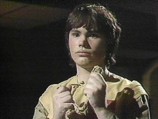 |
| Adric |
|
 This season included two stories where The Master was the main villain. The first of these is "Castrovalva" - the first story of this season. After first returning in last season’s "The Keeper of Traken" and "Logopolis" - the later of which we witnessed end of the Fourth Doctor - "Castrovalva", continued where the storyline of these two stories ended. "Castrovalva" not only continued with The Doctor’s recent regeneration, including all the classic elements that follow a regeneration, but The Master causing havoc in only a way The Master can. This is an interesting story which allowed Nyssa and Tegan take more of an active role, thanks to Adric being kidnapped by The Master and The Doctor spending a lot of the time coming to terms with his regeneration. This season included two stories where The Master was the main villain. The first of these is "Castrovalva" - the first story of this season. After first returning in last season’s "The Keeper of Traken" and "Logopolis" - the later of which we witnessed end of the Fourth Doctor - "Castrovalva", continued where the storyline of these two stories ended. "Castrovalva" not only continued with The Doctor’s recent regeneration, including all the classic elements that follow a regeneration, but The Master causing havoc in only a way The Master can. This is an interesting story which allowed Nyssa and Tegan take more of an active role, thanks to Adric being kidnapped by The Master and The Doctor spending a lot of the time coming to terms with his regeneration.
 Another key moment in this season was during "The Visitation" where The Doctor’s sonic screwdriver was destroyed by the Terileptil leader. This occurs when The Doctor and Richard Mace are caught by the Terileptils and placed in a cell. However, when The Doctor attempts to escape from the cell, using his sonic screwdriver, the Terileptil catches him and so destroys the device - much to the alarm of The Doctor. Another key moment in this season was during "The Visitation" where The Doctor’s sonic screwdriver was destroyed by the Terileptil leader. This occurs when The Doctor and Richard Mace are caught by the Terileptils and placed in a cell. However, when The Doctor attempts to escape from the cell, using his sonic screwdriver, the Terileptil catches him and so destroys the device - much to the alarm of The Doctor.
 This season’s must see story without doubt though has to be the Cyberman story "Earthshock". After appearing at least once, and sometimes twice a season during the Second Doctor’s era these classic monsters, who come a close second to rival the dreaded Daleks, all but disappeared from our screens for nearly all of the Fourth Doctors era and all of the Third Doctor’s era. In fact they had only appeared in one story during this period of 14 years. This was in the 1975 Fourth Doctor story "Revenge of the Cybermen" seven years before "Earthshock". This season’s must see story without doubt though has to be the Cyberman story "Earthshock". After appearing at least once, and sometimes twice a season during the Second Doctor’s era these classic monsters, who come a close second to rival the dreaded Daleks, all but disappeared from our screens for nearly all of the Fourth Doctors era and all of the Third Doctor’s era. In fact they had only appeared in one story during this period of 14 years. This was in the 1975 Fourth Doctor story "Revenge of the Cybermen" seven years before "Earthshock".
 What makes this "Earthshock" even more special is at the time there was no publicity to announce there return. Producer John Nathan-Turner went to great lengths to mask their return to the show - hence the use of a non-typical title. John Nathan-Turner even had the studio observation galleries closed for the duration of recording and he even turned down an offer from the Radio Times to feature the Cybermen on their cover. This was despite the fact that Doctor Who had not appeared on a Radio Times cover since 1973. What makes this "Earthshock" even more special is at the time there was no publicity to announce there return. Producer John Nathan-Turner went to great lengths to mask their return to the show - hence the use of a non-typical title. John Nathan-Turner even had the studio observation galleries closed for the duration of recording and he even turned down an offer from the Radio Times to feature the Cybermen on their cover. This was despite the fact that Doctor Who had not appeared on a Radio Times cover since 1973.
 And so completely unannounced the Cybermen returned to our screens at the very end of the first episode. But the design of the Cybermen seen in this story had undergone a transformation. Out were the rubber suited costumes to be replaced by more modern high-tech looking army G-suits. And rather than seeing just a few Cybermen, as had been the norm in their earlier stories, but this time we witnessed a whole army of them. This story also introduced the Cyber Leader - again reinforcing the idea that the Cybermen were based on a military hierarchy. And so completely unannounced the Cybermen returned to our screens at the very end of the first episode. But the design of the Cybermen seen in this story had undergone a transformation. Out were the rubber suited costumes to be replaced by more modern high-tech looking army G-suits. And rather than seeing just a few Cybermen, as had been the norm in their earlier stories, but this time we witnessed a whole army of them. This story also introduced the Cyber Leader - again reinforcing the idea that the Cybermen were based on a military hierarchy.
 But it was the ending of this story which makes "Earthshock" a key story in the history of Doctor Who. This, of course, is the death of Adric. The Cyberman’s plan, to use a space-freighter to disrupt a conference being held on Earth and so prevent a number of planets uniting in a war against the Cyber race, is thwarted by Adric. The young lad is convinced that he can decipher three logic codes that are locking the space-freighter on a collision course with Earth. Despite having the opportunity to join the others in an escape pod Adric elects to stay behind to complete his task. But just as he is about to succeed he is disrupted by an injured Cyberman. Having run out of time all that Adric has managed to achieve is to send the doomed space-freighter back in time. With the image of prehistoric Earth growing ever larger on the TARDIS screen his fellow companions and The Doctor, in the TARDIS, watch helplessly in silence as the scanner shows the space-freighter explode on impact with the Earth. This story then ends with the end credits rolling in silence over a close up of Adric’s badge of mathematical excellence lying broken on the TARDIS floor… But it was the ending of this story which makes "Earthshock" a key story in the history of Doctor Who. This, of course, is the death of Adric. The Cyberman’s plan, to use a space-freighter to disrupt a conference being held on Earth and so prevent a number of planets uniting in a war against the Cyber race, is thwarted by Adric. The young lad is convinced that he can decipher three logic codes that are locking the space-freighter on a collision course with Earth. Despite having the opportunity to join the others in an escape pod Adric elects to stay behind to complete his task. But just as he is about to succeed he is disrupted by an injured Cyberman. Having run out of time all that Adric has managed to achieve is to send the doomed space-freighter back in time. With the image of prehistoric Earth growing ever larger on the TARDIS screen his fellow companions and The Doctor, in the TARDIS, watch helplessly in silence as the scanner shows the space-freighter explode on impact with the Earth. This story then ends with the end credits rolling in silence over a close up of Adric’s badge of mathematical excellence lying broken on the TARDIS floor…
|
|
|
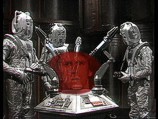 |
| The Cybermen |
|
 The lowest point of this season has to The Master’s second appearance in this season in "Time-Flight" - the final story of the season. Involving a stolen Concorde and containing exclusive footage filmed at Heathrow Airport this story promised so much but the end result was rather disappointing. Even the unexpected scene at the very end where Tegan Jovanka is left behind at Heathrow is not enough for fans to like this story any more. Despite not being the least watched story at the time (this accolade went to "Kinda") "Time-Flight" has twice been voted into the bottom five in the Doctor Who Magazine polls (1998 and 2009). The lowest point of this season has to The Master’s second appearance in this season in "Time-Flight" - the final story of the season. Involving a stolen Concorde and containing exclusive footage filmed at Heathrow Airport this story promised so much but the end result was rather disappointing. Even the unexpected scene at the very end where Tegan Jovanka is left behind at Heathrow is not enough for fans to like this story any more. Despite not being the least watched story at the time (this accolade went to "Kinda") "Time-Flight" has twice been voted into the bottom five in the Doctor Who Magazine polls (1998 and 2009).
 "Earthshock" should be considered to be the high point of the season. "Black Orchid" may have been watched at the time by the most viewers but "Earthshock" has everything going for it. Dark caves, mysterious deaths, the sad ending and of course the return of the Cybermen. This story has twice been voted in the top twenty in the Doctor Who Magazine polls (1998 and 2009). "Earthshock" should be considered to be the high point of the season. "Black Orchid" may have been watched at the time by the most viewers but "Earthshock" has everything going for it. Dark caves, mysterious deaths, the sad ending and of course the return of the Cybermen. This story has twice been voted in the top twenty in the Doctor Who Magazine polls (1998 and 2009).
 Since its initial broadcast "Earthshock" has become a crucial story in the history of the show. As well as bringing the Cybermen into the Eighties this story also reminded viewers that the companions were more vulnerable, to nasty things happening to them, than had previously been the case. "Earthshock" therefore paved the way for more gritty stories were anything was possible. Since its initial broadcast "Earthshock" has become a crucial story in the history of the show. As well as bringing the Cybermen into the Eighties this story also reminded viewers that the companions were more vulnerable, to nasty things happening to them, than had previously been the case. "Earthshock" therefore paved the way for more gritty stories were anything was possible.
|
|
|
|
|
| |
The Firsts:
 Peter Davison's first full story as the Fifth Doctor. (Castrovalva) Peter Davison's first full story as the Fifth Doctor. (Castrovalva)
 The first Doctor Who story not to be first broadcast on a Saturday. (Castrovalva) The first Doctor Who story not to be first broadcast on a Saturday. (Castrovalva)
 Eric Saward's first involvement in the show as Script Editor. (Castrovalva) Eric Saward's first involvement in the show as Script Editor. (Castrovalva)
 The first Doctor Who story to be written by Terence Dudley. (Four to Doomsday) The first Doctor Who story to be written by Terence Dudley. (Four to Doomsday)
 The first appearance of the Mara. (Kinda) The first appearance of the Mara. (Kinda)
 The first Doctor Who two-part story - since the 1975 Fourth Doctor story "The Sontaran Experiment". (Black Orchid) The first Doctor Who two-part story - since the 1975 Fourth Doctor story "The Sontaran Experiment". (Black Orchid)
 The first appearance of the Cybermen for 7 years - since the 1975 Fourth Doctor story "Revenge of the Cybermen". (Earthshock) The first appearance of the Cybermen for 7 years - since the 1975 Fourth Doctor story "Revenge of the Cybermen". (Earthshock)
 The first death of a companion (Adric) since the 1965/66 First Doctor story "The Daleks' Master Plan". (Earthshock) The first death of a companion (Adric) since the 1965/66 First Doctor story "The Daleks' Master Plan". (Earthshock)
 The first, and only, occasion in which a Doctor Who story does not end with the traditional theme tune. (Earthshock) The first, and only, occasion in which a Doctor Who story does not end with the traditional theme tune. (Earthshock)
 David Banks' first involvement in the show as the Cyber Leader. (Earthshock) David Banks' first involvement in the show as the Cyber Leader. (Earthshock)
 The first time companion Tegan Jovanka stops travelling in the TARDIS. (Time-Flight) The first time companion Tegan Jovanka stops travelling in the TARDIS. (Time-Flight)
|
| |
The Lasts (Subject to Future Stories):
 Matthew Waterhouse's last story as companion Adric. (Time-Flight) Matthew Waterhouse's last story as companion Adric. (Time-Flight)
|
| |
| Doctor Who CMS Magazine (In Vision) | Issue 62: Season 19 Overview - (Released: January 1996) | | Doctor Who Magazine - Episode Guide | Issue 157 - (Released: February 1990) | | Doctor Who Magazine - Countdown to 50 | Issue 448 - (Released: June 2012) |
| Title | Release Date (UK) | Format | Source | Companions | | Lonely Days | July 1995 | Short Story | Decalog 2 - Lost Property | Nyssa | | Past Reckoning | July 1996 | Short Story | Decalog 3: Consequences | Nyssa | | Cold Fusion | December 1996 | Novel | The Missing Adventures | Adric, Nyssa, Tegan Jovanka, Roslyn Forrester and Chris Cwej | | The Parliament of Rats | March 1998 | Short Story | Short Trips | Nyssa | | The Eternity Contract | March 1999 | Short Story | More Short Trips | Nyssa | | Divided Loyalties | October 1999 | Novel | The Past Doctors Stories | Adric, Nyssa and Tegan Jovanka | | The Land of the Dead | January 2000 | Audio | The Big Finish Audio Stories | Nyssa | | Winter for the Adept | July 2000 | Audio | The Big Finish Audio Stories | Nyssa | | The Mutant Phase | December 2000 | Audio | The Big Finish Audio Stories | Nyssa | | Primeval | November 2001 | Audio | The Big Finish Audio Stories | Nyssa | | Spare Parts | August 2002 | Audio | The Big Finish Audio Stories | Nyssa | | Hearts of Stone | March 2003 | Short Story | The Big Finish Short Trips 2: Companions | Adric, Nyssa and Tegan Jovanka | | Creatures of Beauty | May 2003 | Audio | The Big Finish Audio Stories | Nyssa | | Long Term | June 2003 | Short Story | The Big Finish Short Trips 3: A Universe of Terrors | | | The Comet's Tail | June 2003 | Short Story | The Big Finish Short Trips 3: A Universe of Terrors | | | Erato: Confabula | September 2003 | Short Story | The Big Finish Short Trips 4: The Muses | Nyssa | | Empire of Death | March 2004 | Novel | The Past Doctors Stories | Nyssa | | The Immortals | April 2004 | Short Story | The Big Finish Short Trips 6: Past Tense | Adric, Nyssa and Tegan Jovanka | | Not So Much a Programme, More a Way of Life | August 2004 | Short Story | The Big Finish Short Trips 9: Monsters | Nyssa | | Artificial Intelligence | October 2004 | Short Story | The Big Finish Short Trips 10: 2040 | | | In the TARDIS: Christmas Day | December 2004 | Short Story | The Big Finish Short Trips 11: A Christmas Treasury | Adric, Nyssa and Tegan Jovanka | | The Game | February 2005 | Audio | The Big Finish Audio Stories | Nyssa | | Pride: The 57th | March 2005 | Short Story | The Big Finish Short Trips 12: Seven Deadly Sins | Nyssa | | Saturn | September 2005 | Short Story | The Big Finish Short Trips 14: The Solar System | Nyssa | | The Church of Saint Sebastian | December 2005 | Short Story | The Big Finish Short Trips 15: The History of Christmas | Nyssa | | Wake | March 2006 | Short Story | The Big Finish Short Trips 16: Farewells | Tegan Jovanka | | Resonance | September 2006 | Short Story | The Big Finish Short Trips 18: Time Signature | | | First Born | September 2006 | Short Story | The Big Finish Short Trips 17: The Centenarian | Adric, Nyssa and Tegan Jovanka | | Circular Time | January 2007 | Audio | The Big Finish Audio Stories | Nyssa | | Renaissance of the Daleks | March 2007 | Audio | The Big Finish Audio Stories | Nyssa | | Suspension of Disbelief | June 2007 | Short Story | The Big Finish Short Trips 20: Destination Prague | | | Return to the Web Planet | December 2007 | Audio | The Big Finish Audio Stories | Nyssa | | God Send Me Well to Keep | March 2008 | Short Story | The Big Finish Short Trips 24: The Quality of Leadership | Nyssa | | The Haunting of Thomas Brewster | April 2008 | Audio | The Big Finish Audio Stories | Nyssa and Thomas Brewster | | Tweaker | July 2008 | Short Story | The Big Finish Short Trips 25: Transmissions | Nyssa | | The Boy That Time Forgot | July 2008 | Audio | The Big Finish Audio Stories | Adric and Nyssa | | A Perfect World | September 2008 | Audio | The Big Finish Audio Stories | Nyssa and Thomas Brewster | | Time Reef | September 2008 | Audio | The Big Finish Audio Stories | Nyssa and Thomas Brewster | | The Darkening Eye | December 2008 | Audio | The Big Finish Audio Stories (Companion Chronicles) | Nyssa | | Castle of Fear | October 2009 | Audio | The Big Finish Audio Stories | Nyssa | | The Eternal Summer | November 2009 | Audio | The Big Finish Audio Stories | Nyssa | | Plague of the Daleks | December 2009 | Audio | The Big Finish Audio Stories | Nyssa | | The Star Men | January 2017 | Audio | The Big Finish Audio Stories | Adric, Nyssa and Tegan Jovanka | | The Contingency Club | February 2017 | Audio | The Big Finish Audio Stories | Adric, Nyssa and Tegan Jovanka | | Zaltys | March 2017 | Audio | The Big Finish Audio Stories | Adric, Nyssa and Tegan Jovanka | | Kingdom of Lies | January 2018 | Audio | The Big Finish Audio Stories | Adric, Nyssa and Tegan Jovanka | | Ghost Walk | February 2018 | Audio | The Big Finish Audio Stories | Adric, Nyssa and Tegan Jovanka | | Serpent in the Silver Mask | March 2018 | Audio | The Big Finish Audio Stories | Adric, Nyssa and Tegan Jovanka |
|
|
| |
The Doctor and Companions| | 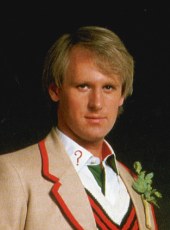 | | The Fifth Doctor |
|
| | | | |
|
On Release | | The Collection Season 19 Limited Edition Blu-Ray Cover |

VIDEO |
| | 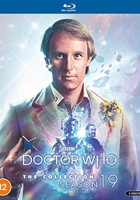 | | The Collection Season 19 Standard Edition Blu-Ray Cover |

VIDEO |
| | | | |
Magazines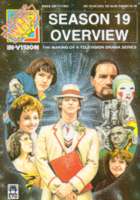 | | Doctor Who CMS Magazine (In Vision): Issue 62: Season 19 Overview |
| 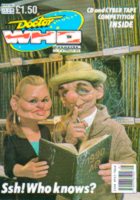 | | Doctor Who Magazine - Episode Guide: Issue 157 |
| 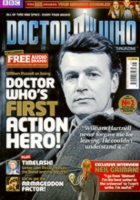 | | Doctor Who Magazine - Countdown to 50: Issue 448 |
| | | | |
|
|
|
| |
| |
|
| |
| |
|
| Doctor Who is the copyright of the British Broadcasting
Corporation. No infringements intended. This site is not endorsed by the BBC or
any representatives thereof. |
|